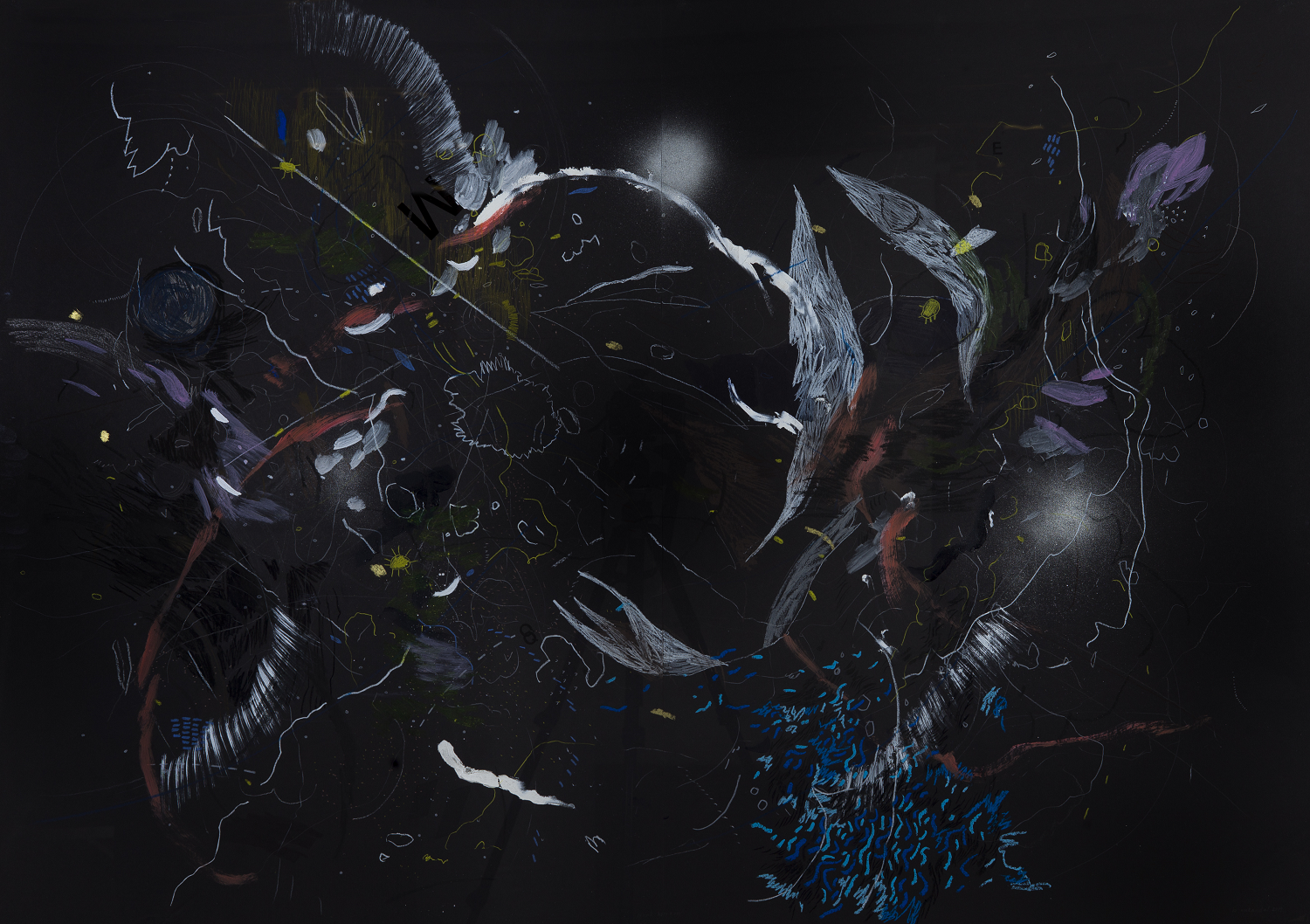Mode of Mutuality: Io Makandal’s ‘Life in the entropics’
Natasha Norman and Annemi Conradie
15 August 2019
‘Life in the Entropics’ is Io Makandal’s second solo exhibition at Kalashnikovv Gallery. The show’s title points to existence in times and spaces that are marked by entropy, which describes inevitable changes within a closed system, usually from a state of order to a state of disorder and unpredictability. In her first solo exhibition at Kalashnikov Gallery in 2017, titled ‘Entropy into a third landscape’, Makandal juxtaposed urban debris and consumer goods with hanging and protruding plants, suggesting nature’s potential to reclaim its ground. In ‘Life in the Entropics’, the leafy greens are strikingly absent, as if they have retreated or been eradicated.
Despite human efforts to minimise disorder, to systematise and optimise productivity and profit, the entropy within a system – such as the universe – is inevitably intensifying. For mathematician James Newman, “entropy is the general trend of the universe toward death and disorder”. As such, ‘Life in the Entropics’ exploits the dichotomies of order and disorder, transformation and ruin inherent to the processes of entropy but without becoming fatalistic. In fact, allowing oneself to be immersed in one of Makandal’s drawings, is to be hurled into vast worlds of vibrating, pulsating life. Irrespective of our human [in]ability to interpret the marks that signify these worlds and its dynamic constituents, their evolution continues unabated.
Two large works on paper, Placing Space I and II, are suspended a few metres apart to create a semi-private space. Standing between the back of one, and the front of the other work, the drawings overwhelm with their size and blast of painterly shrapnel. The size of the works and the vitality of the marks suggest a drawing process that is dynamic, gestural and performative. The ‘backs’ of the works show seeped-through evidence of the marks made on the ‘front’, which blurs distinctions between artwork and corollary, intention and chance.
The invitation to be transported into other spaces and dimensions through visual immersion is carried through in Event Horizon, a mixed-media work on black paper that evokes three-dimensional astrophysic maps. To meditate on the marks that are layered as if suspended in impenetrable, horizon-less space, is to become unmoored and to drift among an infinite number of other bodies, signs and data units.
In the installation, Life in the Entropics, Makandal has packed building rubble, tinted glass, shards and stones into a coarse, weighty edifice. Orange barrier netting trails from a stick propped between the rocks and two bare corn cobs lie in the ruins. Lengths of white fabric suspended into sharp triangles produce weightless counterpoints that gently touch the dirty mound. The re-construction simultaneously rests like a mausoleum and drifts like a raft with the erect flagpole appropriated for a child’s mast with its straggling flag of plastic netting.
The cobs and the visible wood grain, splinters and knots that are seen in the small mixed media works (Detritus 1, Drifting Cells I and II) beside the installation present discreet indexes of nature. Apparently dead and used up, they remind of the natural world that is exploited and destroyed to generate power, to build and manufacture. In this context, the installation seems a modest, though poignant attempt at (re-)building with the waste that is generated by construction work.
The exhibition contains numerous references to life forms invisible to the human eye. In Organism I and II, dapples, strokes, dots, dashes and printed letters seem to bloom in microbial clusters. ’Plant Polygraph I and II similarly suggest life forms that are frequently disregarded, but that are indispensable to human survival. The drawings record the scientific experiment of tracking a plant’s respiration and presumably revealing (to those who can read the graph) the creature’s vitality, anxiety and even its lies. Is an anxious, lying plant not a sentient being, and if so, how does it affect our categorising and treatment of flora?
In a delicate, playful manner, Makandal prompts questions about the anthropocentric logic that posits humans as masters of the universe and the primary centre of meaning. For cultural historian Thomas Barry, we urgently need a shift toward a nonanthropocentric ethics where “everything is a centre of value”. This demands a change in how we see ourselves in relation to the universe and how we make meaning and determine value. Makandal’s exhibition encourages a viewer to engage in this shift by creating works that require a transitioning towards what Barry terms a “mode of mutuality” and an understanding of our existence as inter-related with non-humans.
Artists have seminal roles to play in facilitating new stories and ways of seeing. Makandal’s works expose how, in spontaneous and random ways, entropy is magnificently productive and pushes towards creative conversion. She reflects entropic disruption and destruction as part of the cycle of life, death and renewal. The explosion of familiar signs might well spell catastrophe, but the resulting marks and patterns are potential points of a new origin.

